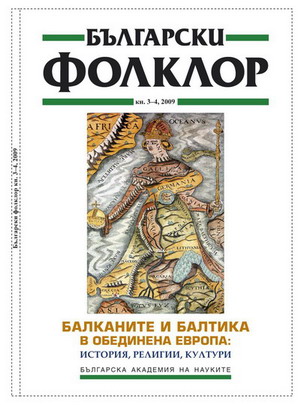Култът към Барбора Умястаускайте от Жагаре
The Cult of Barbora Umiastauskaitė from Žagarė
Author(s): Rasa Račiūnaitė-PaužuolienėSubject(s): Anthropology
Published by: Институт за етнология и фолклористика с Етнографски музей при БАН
Summary/Abstract: The article analyzes the phenomena of cultural and religious identity of landlady Barbora Umiastauskaitė (1628–1648) from a small northern Lithuanian town Žagarė. This personality represents the Catholic culture of North Lithuania in 17th century. The work is based on the previous sources and on the field investigation materials gathered by the author with the group of Lithuanian scientists in 2006-2008 in northern Lithuania (districts of Šiauliai, Joniškis), and in the district of Duobele, in Latvia. The oldest historical sources proclaim the miracles which were received by the intercession of Barbora Umiastauskaitė since 18th century. Written sources also mentioned her non-decaying and non-burning body, distinguished by supernatural phenomena, from which people obtained graces and recoveries. The efforts lasting throughout centuries to legalize the cult of Barbora from Žagarė as a saint by the commons were not successful. By reason of long occupation the process of canonization is longstanding. Nevertheless, the beatification process of God’s servant Barora Umiastauskaitė was started in the Diocese of Šiauliai on September 24, 2005. Although Barbora from Žagarė is not yet officially recognized as a saint by Church, however, she is worshipped by means of various popular devotion rites and is considered to be a venerable and a saint. The most frequent reasons why people resort to Barbora’s help are: health for the sick, protection from deportation and repressions, family and community matters, assistance in one’s studies and at examinations, recovery of the things that were lost or stolen, cure from addiction. The religious stories about God’s servant Barbora Umiastauskaitė from Žagarė offer the collective national experience, values, the world outlook of the people, and peculiarities of the national character. They also express the religious, cultural and national identity of different groups of North Lithuania population.
Journal: Български фолклор
- Issue Year: XXXV/2009
- Issue No: 3-4
- Page Range: 160-167
- Page Count: 8
- Language: Bulgarian
- Content File-PDF

